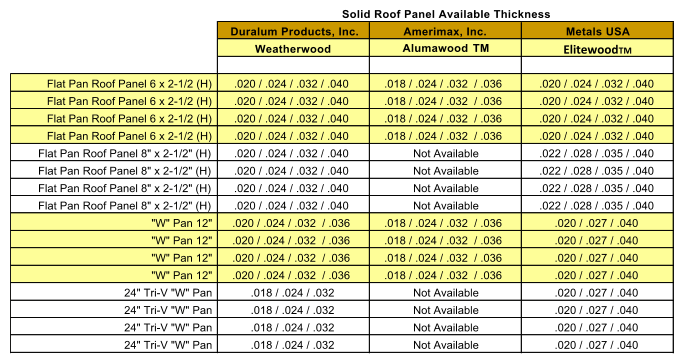FREQUENTLY ASKED QUESTIONS
What is the cost of Weatherwood vs. Wood?
The cost of wood after paint is about the same as Weatherwood.
Will I ever need to replace my Weatherwood shade cover?
Apart from a natural disaster, (Tornado, Hurricane, Zombie Apocalypse), no. Under some extreme circumstances we see hail damage, but it’s uncommon. Also, most homeowners insurance will cover the dented material.
What is Weatherwood?
Weatherwood is an aluminum replacement for wood in the construction of (primarily) shade structures.
How is Weatherwood made?
Weatherwood is made from sheets of painted aluminum which is embossed with a wood grain to give the appearance of painted lumber. The sheets are roll-formed into a square/rectangular tube with a thin seam along one side. (Seams face the sky and are not visible from underneath)
How will my shipment arrive?
For shipments to Southern California and Sacramento area, it will arrive by truck, and you will need to help the driver unload. If you are outside our delivery area, your shipment will arrive on a large pallet, wrapped in cardboard (and some scrap material to fill in gaps). Typically, pallets are between 10’ and 19’-6”. When the delivery truck arrives you will need to have someone available to help the driver unload and select a place to stack the material.
Does Weatherwood dent easily?
Certain beams are thicker gauge than others. Rafters, headers and posts are a thicker gauge and are sturdy. Lattice tubes dent fairly easily and should be handled with care. Once the shade cover is installed, the “shear strength” is improved, with all the pieces attached to the others for rigidity. The 2”×6” side plates for the posts are filled with foam to resist denting.
Can I repair dented pieces of Weatherwood?
In some cases, the material can be bent back into its original shape fairly easily. Usually dented or bent ends can be bent back using pliers. Cardboard or cloth should be put between the pliers and the material to resist scratching. Most times, end caps will help return the material to its original shape. Broken seams always need replacement.
Can I cut the material?
Yes. See Below.
What tools do I need?
A screw gun or cordless drill
A 5/8” spade bit
A Hex Drive set
A 3/8” masonry drill bit (if attaching to slab)
A Skil-saw or cutoff saw with an approximately 80-90 tooth blade, usually used for cutting Vinyl Siding. (This gives the cleanest cut.)
A Tape Measure
A Chalk line
A level, or preferably a post level.
Can Weatherwood be used in custom applications?
Yes. Weatherwood has been used in a variety of applications.
Can I use Weatherwood as a "Hand Rail" for a deck or pergola?
No. Due to the fact that at some point someone usually sits on a railing or hand rail, it’s not advised.
Does Weatherwood get hot in the sun?
Most colors are pale, and deflect the sun’s heat, but watch out for Siennawood (Spanish Brown)! If you get fiberglass columns, this isn’t a problem.
Will my Solid Weatherwood cover radiate heat through the roof?
No. The pans that make up the top of the cover deflect heat from above.
If the Solid Weatherwood cover will resist heat, why buy the more expensive Insulated Roof Panels?
Our customers decide on the IRP for a variety of reasons. One reason is the finished look from above. The IRP has the same look above and below the cover. If a second floor window is overlooking the shade cover, the IRP has a nicer look. There is also less rain noise with IRP.
Is there a lot of rain noise with the solid covers?
No. That’s not a complaint we’ve had so far.
Why should I choose Weatherwood over the competitors?
The first reason is the Warranty. Duralum’s Transferrable Lifetime Warranty is the industry leading warranty. The second reason is price. Weatherwood is more cost effective than all other comparable products.


Can Weatherwood handle heavy winds?
Yes. Our normal structures are rated to 110mph winds, but wind loads of 130mph are available. We encourage customers to call the local building department to find out the required wind and snow loads for your area before ordering.
Can Weatherwood handle the snow that falls in my area?
Yes. We have snow loads of up to 50lbs per square foot. We encourage customers to call the local building department to find out the required wind and snow loads for your area before ordering.
Do you offer shop drawings?
Yes. We can provide AutoCAD drawings for your shade structure, showing post spacing, footing size, beam spacing, etc.
Do you offer custom "stamped" engineering?
Yes, but it’s not done “in-house”, so pricing is subject to the engineer’s pricing. Plans usually cost $300-$500 and take 4 weeks. Most building departments will accept our standard engineering packet with our custom generated shop drawings (no charge).
What are the actual dimensions of the Weatherwood components/beams?
Header beams are (3” × 8”)
Rafter beams, post side-plates, and side fascia are (2” × 6.5”)
Posts are (3” × 3”)
Lattice tubes come in (1.5” × 1.5”), (2” × 2”), and (2” × 3”)
Flat pans are (8” wide) x (projection)
Insulated Roof Panels (48” wide) x (projection)
Gutter Downspouts are (2” × 2”), and (2” × 3”)
What are the advantages of Weatherwood covers vs. Wood?
There are many advantages to a Weatherwood patio cover when compared to wood. Reasons include: Lifetime Warranty on the finish, Long term cost effectiveness, ease of install, lightweight, termite proof, no fire danger (can be used in San Diego County where no wood structures are permitted to attach to the exterior of the home)
How can I attach my Weatherwood cover to my house?
Several methods are approved, including Wall attachment, Ledger Board, Eaves, and Roof Mounts (Freestanding also available)
Can I attach a freestanding cover to my existing slab?
Unfortunately, not in most cases. Freestanding covers need footings. (Existing subterranean footings can be used with proper anchoring.)

